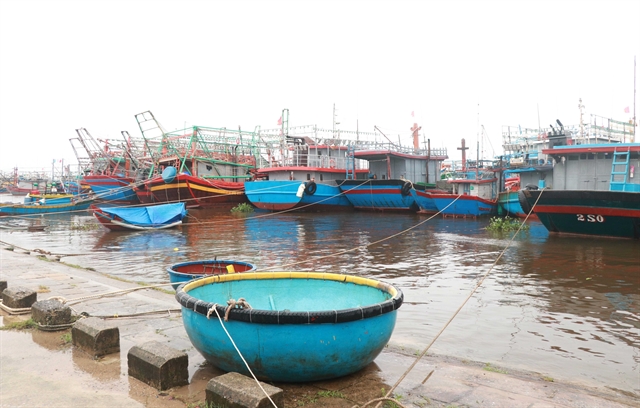 Society
Society


|
| Boats are safely anchored at the Nam Cửa Việt storm shelter in Triệu Phong District, Quảng Trị Province. — VNA/VNS Photo Nguyên Lý |
HÀ NỘI — The southern area of Nghệ An to Quảng Ngãi Province on Tuesday will experience heavy rain with total rainfall ranging from 50-150mm, with some places receiving over 200mm, according to the National Centre for Hydro-Meteorological Forecasting.
The heavy rain is likely to persist until Thursday.
The Gulf of Tonkin experienced wind speeds of 29-74km per hour on Monday.
The northern part of the East Sea had wind speeds of 39-74kph.
The sea area from Quảng Ngãi to Kiên Giang experienced scattered showers and thunderstorms.
To proactively respond and minimise damage caused by natural disasters, the National Steering Committee for Natural Disaster Prevention and Control on Sunday requested provinces and cities from Nghệ An to Quảng Ngãi to closely monitor the weather forecast.
They must provide timely and complete information to organisations and people to enable them to take preventive measures.
The provinces should deploy forces to inspect and review residential areas along rivers, streams, and low-lying areas to organise the relocation and evacuation of people in areas at high risk of deep flooding, flash floods, and landslides.
They should also assign forces to guide traffic, especially through underpasses, spillways, deeply flooded areas, fast-flowing water, and areas at high risk of landslides.
Another important task is ensuring the safety of teachers, students, and schools in flooded areas, and being prepared to prevent flooding in urban areas, agricultural areas, and industrial parks.
The aforementioned provinces and cities must inspect and review reservoirs and downstream areas, especially small hydroelectric reservoirs and important irrigation lakes.
They are responsible for arranging permanent forces to operate the reservoirs and handle any situations that may arise, ensuring the safety of projects under construction, especially key ones.
Additionally, they should notify captains and ship owners to have appropriate plans for the safety of people and property, and be ready with forces and means for rescue work when situations arise.
Every problem must be reported to the National Steering Committee for Natural Disaster Prevention and Control. — VNS